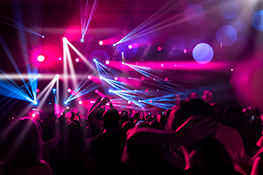Choosing the Right LED Par Can for Your Next Show: A Comprehensive Buyer’s Guide
Understanding the Power of LED Par Cans
LED Par cans have revolutionized stage lighting, offering a compelling blend of vibrant colors, energy efficiency, and long-lasting performance. Unlike their halogen predecessors, LED Par cans boast significantly lower energy consumption, reduced heat output, and a longer lifespan, resulting in substantial cost savings and reduced maintenance over time. This guide will walk you through the key factors to consider when selecting the perfect LED Par can for your next production, ensuring you achieve the desired lighting effects with ease and efficiency.
Power and Wattage: Illuminating the Stage
The wattage of an LED Par can directly impacts its brightness and intensity. Higher wattage generally equates to brighter output, crucial for larger venues or applications requiring significant throw distance. However, this comes at a cost; higher wattage units usually consume more energy and generate more heat. Consider the size of your venue and the required throw distance when choosing the appropriate wattage for your needs. A detailed comparison of wattage and output in different models will help you make an informed decision.
Color Temperature and CRI: Achieving the Perfect Hue
Color temperature, measured in Kelvin (K), determines the “warmth” or “coolness” of the light. Lower Kelvin values (e.g., 2700K) produce warm, yellowish light, while higher values (e.g., 6500K) create cool, bluish light. The Color Rendering Index (CRI) measures how accurately a light source renders the colors of objects compared to natural sunlight. A higher CRI (ideally above 90) is essential for achieving accurate and vibrant color reproduction on stage. Understanding these parameters allows for precise color control, crucial for setting the mood and ambiance of your performance.
Beam Angle and Projection: Shaping the Light
The beam angle determines the spread of the light. Narrow beam angles (e.g., 10°) create focused, intense beams ideal for highlighting specific areas or creating dramatic effects. Wider beam angles (e.g., 60°) provide broader coverage, perfect for washing the stage with even light. Consider the size of the stage and the desired lighting effect when choosing the appropriate beam angle. This will ensure your lighting setup perfectly complements the performance.
Features and Functionality: Enhancing Your Control
Modern LED Par cans offer a range of advanced features enhancing control and versatility. Some key features to consider include: DMX control for precise lighting programming, built-in color mixing for smooth color transitions, strobe effects for dynamic lighting displays, and adjustable dimming curves for subtle light changes. Assess your technical expertise and lighting requirements when selecting these features; advanced features often come with a higher price tag but offer greater creative freedom.
Durability and Build Quality: Investing in Reliability
Investing in durable, high-quality LED Par cans ensures longevity and minimizes maintenance costs. Look for robust construction, weather-resistant materials (if outdoor use is anticipated), and a reputable manufacturer with a proven track record of reliability. Reading reviews and comparing warranties will provide valuable insights into the overall quality and dependability of the units.
Budget and Value: Balancing Cost and Performance
LED Par cans are available across a wide price range. While higher-priced models often boast superior features and performance, several budget-friendly options still offer excellent value. Carefully weigh the features and performance requirements against your budget to find the optimal balance between cost and quality. Prioritize the features most important to your production and choose a model that aligns with your financial constraints.
Conclusion: Illuminating Your Stage with the Right Choice
Selecting the right LED Par can involves careful consideration of several key factors. By understanding wattage, color temperature, CRI, beam angle, features, durability, and budget considerations, you can make an informed decision to enhance your next show’s visual appeal and ensure a spectacular lighting display.


 Auditorium Construction Services
Auditorium Construction Services 